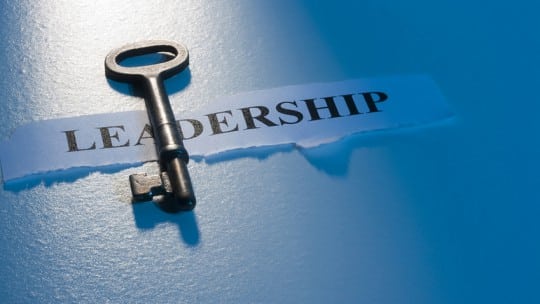

PR professionals recognize and harness the power of filters on a daily basis. When positioning brands to media, industry executives and consumers, we know the lens we provide is instrumental in shaping perceptions of and relationships with the organizations we represent.
We strive to ensure that constituents understand important nuances of the topic we are promoting. In addition, we are fastidious in crafting a message that helps stakeholders broaden their perspective.
When it comes to our professional development, however, we often fall short in understanding the full impact of framework and filters on successful communication.
At a leadership workshop, I use a group exercise that challenges the framework we typically bring to goal setting, work situations and daily life. When asked to share takeaways, one participant instinctively responded: “Anything is possible.” This respondent was referring to the power of possibility and opportunity that the right filters afford us.
Depending on which we choose, though, filters can work for and against us; they can help expand our perspective, create options and motivate others; they also can restrict our scope, limit opportunities and crush the creative spirit of those around us.
Consider these profiles:
Profile 1:
Dan is a senior communication professional. He’s loyal, diligent and very knowledgeable. He is viewed as a specialist in a lucrative, high-profile sector and is skilled at explaining important nuances. He is in a position to lead a high-growth practice area but is faced with a skeletal staff and brand clients who desire over-service.
Frustrated, he knows, or firmly believes, that if his PR agency would modify its billing structure, hire additional staff and attract a different client prototype, the firm would be set up for success. He puts in a lot of overtime, but often finds himself sighing in despair at the hand he was dealt and frustrated that those around him just fail to get it. Ultimately, he is replaced.
Profile 2:
Jen is a junior PR professional serving as team lead for a client account no one else wants to touch. At first glance, the client’s sector seems boring, and the business unit has rigid demands and rules, many of which seem irrelevant. Extensive background checks need to be performed on any reporter considered for outreach, and frantic client calls must be returned almost immediately.
While the sector lends itself to a broad range of potential story topics, most are unequivocally off the table. Despite these obstacles, Jen somehow develops a rapport with her contact at the business unit, earns the trust of the team and even is privy to occasional chuckles from the unit’s members in acknowledgment of the organization’s rigid structure.
She secures opportunities within the client’s comfort level, demonstrating respect for these parameters, while also occasionally and delicately challenging boundaries when it is absolutely in the client’s best interest. Jen earns two promotions in one year and is regarded as a hero.
Energy Leadership/ Opportunity Mindset
Granted, the above profiles reflect select ingredients stewing in the daily PR pot. There are many more elements to include, and together, they contribute to the unique flavor of each relationship, communication program and team dynamic. However, we can still pose several questions:
- What is the secret sauce that differentiates the professionals profiled above?
- How do some leaders seem miraculously capable of avoiding frustrating situations, while others feel they are magnets for such scenarios?
The simple answer: Opportunity Mindset, otherwise known as Energy Leadership.
The concept of Energy Leadership highlights the locus of responsibility we assign ourselves for a specific situation. It's the lens we bring to daily interactions as well as stressful situations and our ability to perceive and create opportunity within any situation.
Leaders who operate predominantly at lower energy levels bring more of a tunnel-vision approach to projects and interactions; they believe there are few options or only one way.
Those leaders operating at higher energy levels incorporate more of a prism perspective. There is less fear. These leaders believe any situation is a potential opportunity. “Anything is possible.”
The Victim Lens
Putting this into context, a leader wearing a victim lens (the lowest of seven energy levels) often feels there is no way out. No matter what this leader does, events don’t turn out the way she likes. Common statements reflecting this lens might include:
- “This agency doesn’t set me up for success.”
- “We will never get anywhere with this brand.”
- “It won’t work. Why bother?”
- “I always lose.”
Conflict-Level: Moving up a notch, a leader operating at a conflict-level assigns blame to outside forces but accepts some responsibility for his/her fate by determining to win at all costs. The only problem is that since the leader is right and must win, everyone else is wrong and must lose. There is a lot of black-and-white thinking at this level, as well as blame, judgment and self-protection.
Many leaders, even those who appear successful, often operate at the conflict-level. They may accomplish short-term goals, but in the long run, a conflict-ridden filter is draining and debilitating and often leaves leaders feeling unfulfilled. Team members are uninspired, stop trying and/or quit.
As leaders become more attuned to the potentially harmful filters and lenses they utilize, they will incorporate more responsibility, service and opportunity into their approach. They start asking more instinctively:
- Before I address what needs improvement, what is going right? What can we be happy about? What should we continue and build upon?
- How will this current setback ultimately make us stronger as a team or organization?
- How can we use this misunderstanding to demonstrate our agility, emotional intelligence and ultimate value?
- How will this challenge help me strengthen some of my weaker muscles and put me on a path to evolve even more as a highly valued professional?
True Power Not Force
Such filters are empowering, fueling and expansive, and those who operate more predominantly at these levels are able to lead with true power instead of force. Studies indicate these leaders are not only more successful, but enjoy higher satisfaction in a host of other areas.
For many of us, agency life is a self-selection process. Those who survive and thrive in a fast-paced environment requiring quick learning, people skills and a focus on client service often operate at higher energy levels.
All of us, nevertheless, find ourselves dipping into victim or conflict mode, even if briefly, during stressful times or when we feel a particular value is threatened. Such filters, when not consciously utilized, take a toll; they hold us back from greatness.
Understandably, re-engineering go-to filters takes work. The attitudes, frameworks and worldviews we use often are deeply entrenched and contribute to our identity. We might be aware that they hold us back, but they are familiar and comfortable.
How then, can we work toward becoming more powerful leaders?
Breaking the Pattern
Below are 4 practical tips to help broaden the filters we bring to client, media and new business relationships:
1. Employ Active Listening and ask Empowering Questions. Leaders often are amazed at the marked difference in conversation quality (ie, level of engagement, collaboration and results focus) they experience with clients, colleagues and personal contacts when they make simple adjustments to their conversation style:
- Avoid yes/no questions except for clarifying purposes- ie, when you want to make sure you understand a particular point
- Incorporate open-ended questions that begin with: Who, What, When, Where, How and Why
- Pay more attention to the speaker and less attention to the response you might be itching to share
2. Ensure Alignment on the Brand’s Ultimate, Long-Term Goal When Designing and Implementing a Program. When the pressure is on, it is easy to get caught up in the so-called PR treadmill and focus on churning out results. Regular check-ins, externally with the brand and internally across the account team, will ensure everyone is on board and connecting the dots between a particular strategy and long-term goal. A few guiding questions:
- When this milestone is reached, what will be different for the business?
- What does success look like for this particular brand? Why?
- How will this program help bring us closer to the long-term goal?
- What is the first step we need to take toward achieving this goal?
3. Remember the Most Immediate Goal in any Media Outreach Initiative is to get a Response. We may be great at goal setting with brands or our internal organizations, but sometimes we forget to clarify communication goals with a reporter before hitting the send button or picking up the phone. Some tips:
- Aim for dialogue as opposed to monologue. As in any conversation, the only way to have an exchange is to leave room for the other party to say something. What is one question you would like to ask the reporter you are contacting?
- Brevity is an art. The capacity to distill a business, product or thought-leadership program to its key message and value proposition is an indispensable skill. It not only helps sharpen the focus of a program, but increases the likelihood of media engagement. How well can you transform a press release, executive profile or business summary into one or two sentences?
- Prism perspective trumps tunnel vision. Even if Mark Smith at The New York Times fails to see the ground-breaking appeal of news you want to share, or better yet, if your gut tells you that Mr. Smith likely will fail to see it, what other opportunities exist for engagement? How can you bring value?
4. Networking and New Business as Win-Win Experiences. The more comfortable we become with fine-tuning the filters we use within our office, the more fully this approach will pervade our outside relationships. Questions to keep in mind during any business development initiative:
- How engaged am I in the exchange or experience?
- How effectively do I exhibit curiosity, passion and a win-win mindset?
- What genuine opportunity am I presenting?
Where in your career have you experienced the impact of personal filters on your ultimate success? What is one area you feel might benefit most from a filter reset?
Lara Siegel is CEO, OpenICoaching
